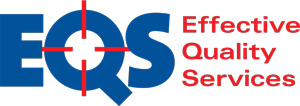For food businesses of every size, compliance with recognized safety standards is no longer optional. Customers, retailers, and regulators expect proof that food safety systems are strong, documented, and consistent. That is why more mid-sized processors and manufacturers are choosing certification through GFSI-recognized standards such as SQF, BRC, and FSSC 22000.
But with the investment of time and resources required, many leaders ask an important question: What is the return on investment (ROI) of GFSI certification?
This article explores the benefits, costs, and competitive advantages of implementing these standards so food companies can make informed decisions about certification.
Why GFSI Matters
The Global Food Safety Initiative (GFSI) is not a certification program itself but a benchmark that recognizes widely accepted food safety standards. SQF, BRC, and FSSC 22000 are three of the most common. Each one provides a structured framework for managing food safety risks and demonstrates to customers that a company takes compliance seriously.
For food companies looking to grow, certification opens doors to larger retailers and supply chains that require suppliers to meet GFSI-recognized standards. Beyond compliance, certification often improves efficiency, reduces waste, and strengthens brand reputation.
Benefits of SQF Certification for Food Companies
The Safe Quality Food (SQF) standard is known for being accessible to small and mid-sized companies while still rigorous enough for global suppliers. Among the benefits of SQF certification for food companies are:
- Access to major retailers and distributors who require GFSI-recognized certification
- Improved documentation and risk management systems
- Enhanced consumer trust through the SQF quality shield on packaging
- Reduced likelihood of recalls or compliance issues
Many owners ask, “Is SQF certification worth it for small food processors?” For businesses hoping to expand into new markets or strengthen customer confidence, the answer is usually yes. The investment often pays for itself through access to larger accounts and fewer costly compliance problems.
Comparing Costs: BRC Certification vs SQF
Budget is always a concern for mid-sized businesses. One frequent question is about the cost of BRC certification vs SQF. Both standards require similar investments in documentation, training, and audits, but there are some differences:
- SQF tends to be slightly more flexible and can be more cost-effective for smaller companies.
- BRCGS (Brand Reputation through Compliance Global Standard) often carries higher costs due to its more prescriptive requirements and emphasis on global supply chains.
While cost is important, companies should also weigh customer requirements. If your biggest buyers demand BRC, the investment may be non-negotiable. On the other hand, if you are entering certification for the first time, SQF may provide a strong and accessible starting point.
The ROI of GFSI Certification
So, “How much ROI can I expect from GFSI certification?” The answer depends on your company’s size, market, and goals. Typical returns include:
- New Market Access: Many national and international retailers require GFSI certification to do business. Gaining access to these buyers often justifies the investment.
- Operational Efficiency: Implementing certification often reduces rework, improves traceability, and strengthens supplier management.
- Risk Reduction: Lower likelihood of recalls or enforcement actions saves money and protects brand value.
- Customer Trust: Certification is a competitive differentiator that can win contracts over uncertified competitors.
While hard ROI figures vary, most certified companies report measurable financial and reputational gains within one to two years of certification.
FSSC 22000 Certification Consulting Services
For businesses seeking a globally recognized system, FSSC 22000 is another option. Built on ISO standards, it integrates seamlessly with quality management systems already in place. Many companies look for FSSC 22000 certification consulting services to guide them through the process.
Benefits include:
- Alignment with ISO frameworks like ISO 9001
- Broad international recognition
- Strong adaptability to different segments of the food industry
Choosing between SQF, BRC, and FSSC 22000 often comes down to customer requirements, existing systems, and long-term growth goals.
What Are the Differences Between SQF, BRC, and FSSC 22000?
Each standard has strengths:
- SQF: Flexible, accessible, strong recognition in North America
- BRC: Highly prescriptive, strong presence in global retail supply chains
- FSSC 22000: ISO-based, international scope, strong integration with management systems
When food business leaders ask, “What are the differences between SQF, BRC, and FSSC 22000?” the answer is not only about the technical details but about which certification aligns best with customer expectations and market strategy.
Final Thoughts
The decision to pursue GFSI-recognized certification is a major step for any food business, but the ROI is often clear. Certification opens new markets, reduces risks, and builds consumer trust. For mid-sized businesses, it can be the difference between maintaining current accounts and scaling into larger supply chains.
Effective Quality Services provides consulting and training support for companies pursuing SQF, BRC, and FSSC 22000 certification. From initial gap assessments to full program development, our team helps businesses achieve certification with confidence.
Contact us today to learn how we can help your company realize the ROI of GFSI certification.

